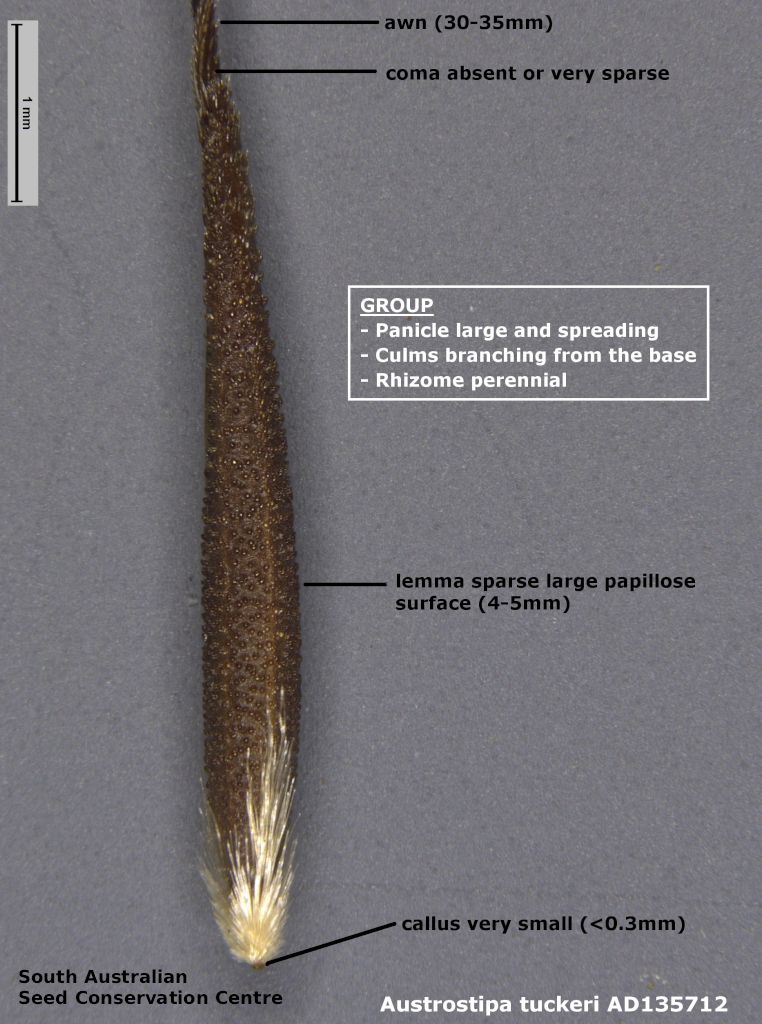
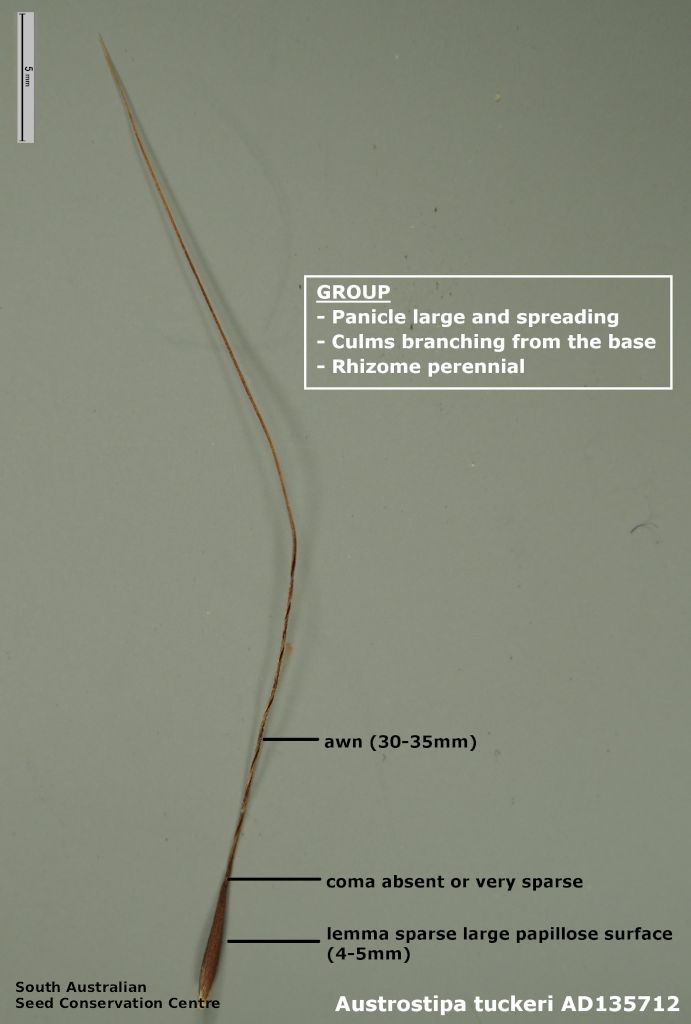
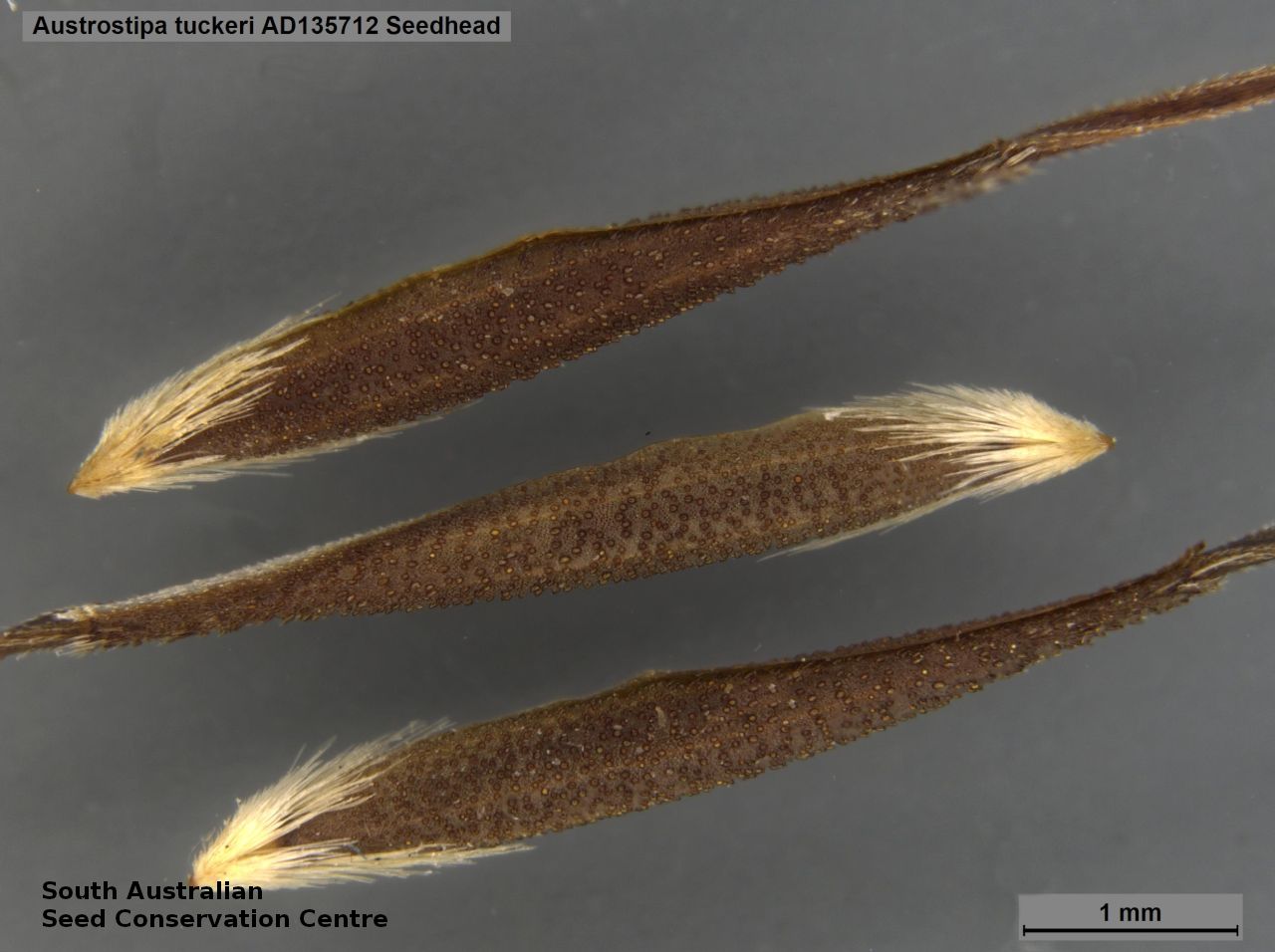
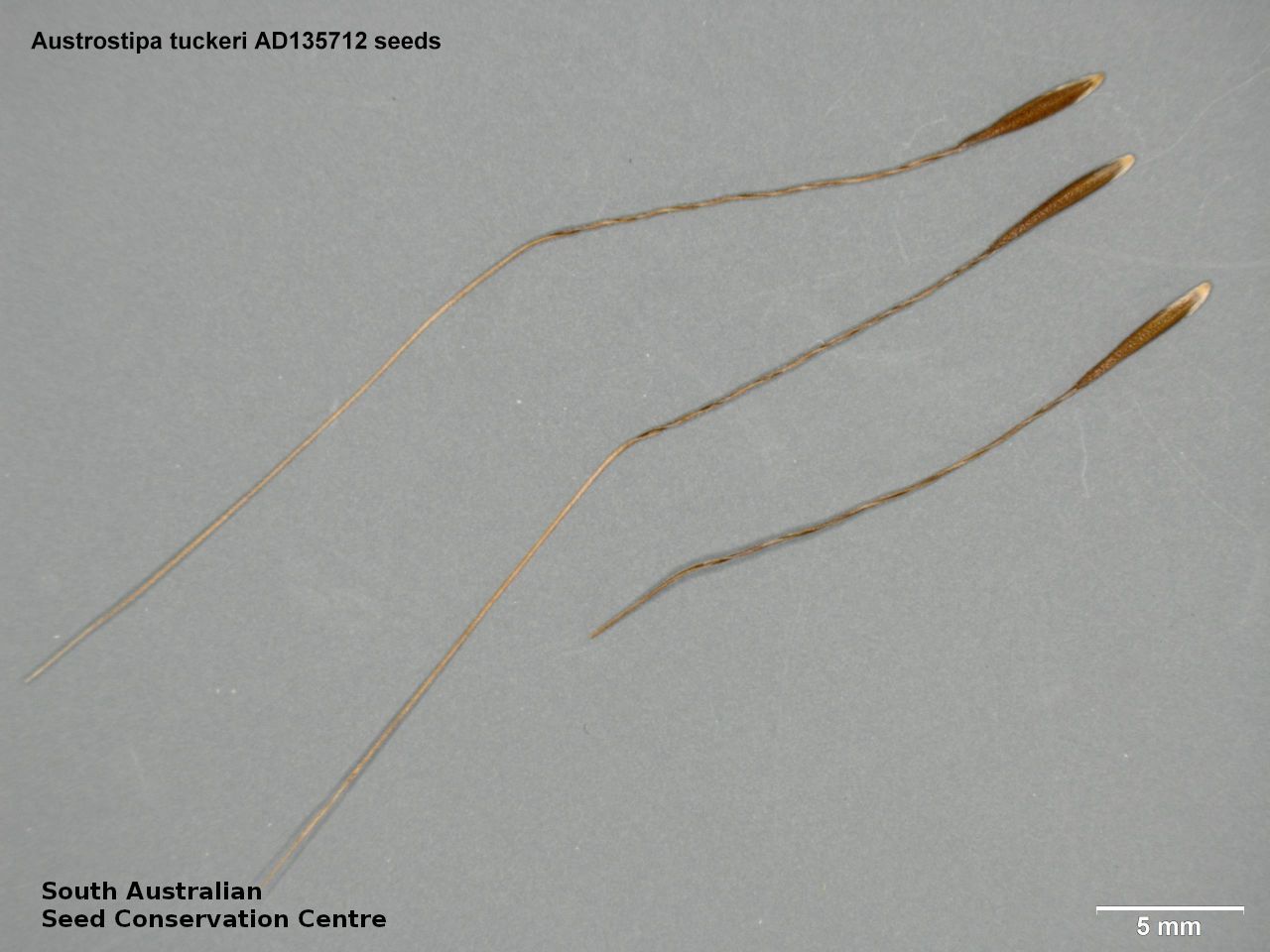

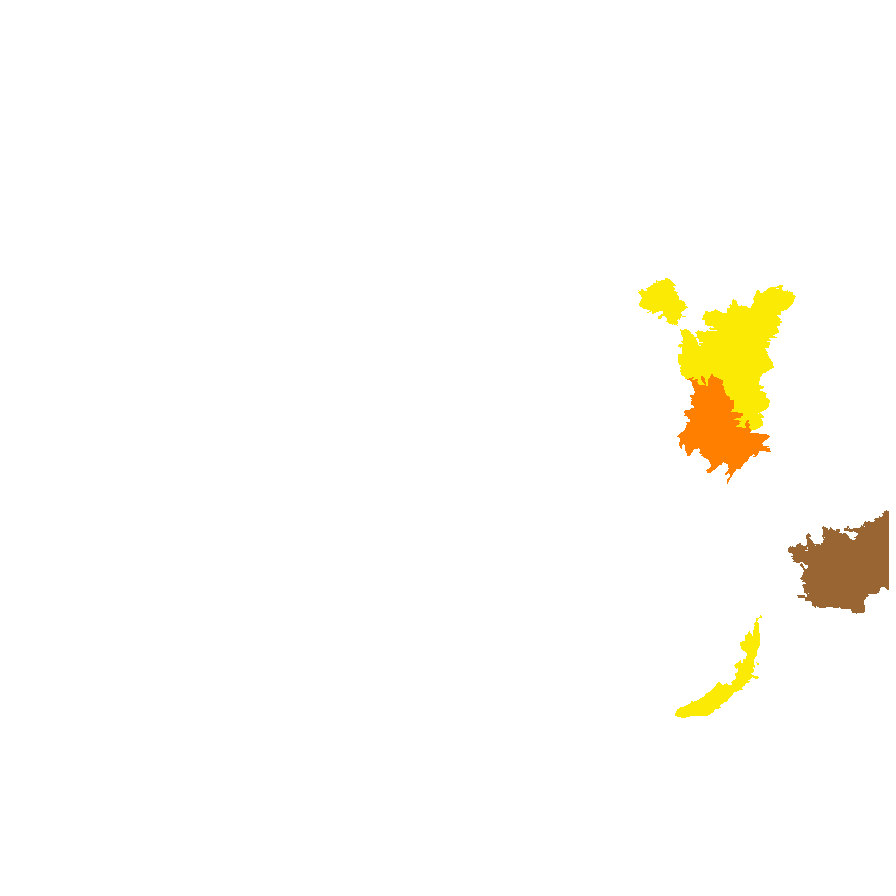
Botanical art
Prior names
Stipa tuckeri
Etymology
Austrostipa from the Latin 'auster' meaning south and the genus Stipa, referring to the genus being allied to Stipa but restricted to Australia. Tuckeri named after Gerard Tucker (1854-1930), a farmer who collected the type specimen between the Lachlan and Darling Rivers, New South Wales.
Distribution and status
Few collections from the Eastern and Murraylands in South Australia, growing on low hills in mulga and mallee associations. Also found in Western Australia, New South Wales and Victoria. Native. Rare in South Australia. Presumed extinct in Victoria. Rare in Western Australia. Common in New South Wales.
Herbarium regions: Flinders Ranges, Eastern, Murray
NRM regions: South Australian Arid Lands, South Australian Murray-Darling Basin
AVH map: SA distribution map (external link)
Plant description
Shortly rhizomatous perennial grass to 1 m high, with decumbent branching culms with densely silky-pubescent nodes. Leaves lightly pubescent or the upper ones glabrous, with blade flat or inrolled, to 20 cm long and 2 mm wide. Inflorescence a widely spreading, pyramidal panicle to 20 cm long; panicle branches plumose with short hairs to 0.5 mm long. Glumes to 7.5 mm long, purplish; subequal, scabrous along nerves. Flowers in response to rain.
Key to this species: perennial grass; culm branching from the base; panicle large and spreading; panicle branches plumose with short hairs 0.5 mm; nodes pubescent; glumes scabrous on nerves Fruits are dark-brown linear-ovoid lemma to 5 mm long with sparsely papillose surface; covered in white hairs only about the callus, otherwise glabrous; coma absent or very sparse; callus very small to 0.3 mm long; awn straight or once bent, 35 mm long, scabrous; palea up to about one-third as long as lemma and thinly membranous. Seeds are yellow-brown grain to 3 mm long within the lemma. Seed embryo type is lateral.
Seed collection and propagation
Collect seeds between January and December. Use your hands to gently strip the seeds (lemma) off the mature fruiting spike, those that are turning brown. Mature seeds will come off easily compare to the immature seeds that remain on the spike. Alternatively, you can break off the whole fruit spike to allow some of the seeds to mature further. Place the seeds/spike in a tray and leave to dry for two weeks. No further cleaning is required if only seed collected. If seed spikes collected, use hand to strip off the mature seeds. Store the seeds with a desiccant such as dried silica beads or dry rice, in an air tight container in a cool and dry place. Viability of grass seeds could be very variable, depending on time of seed collections and seasonal conditions.